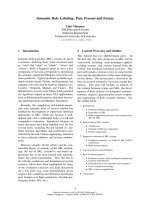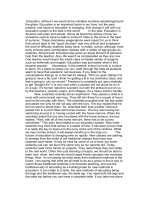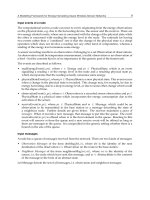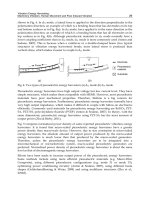How global currencies work past, present, and future
Bạn đang xem bản rút gọn của tài liệu. Xem và tải ngay bản đầy đủ của tài liệu tại đây (3.38 MB, 270 trang )
H ow G lo bal Cu r r e n ci e s Wo r k
Eic77007_Workbook.indd 1
31/07/17 6:57 PM
Eic77007_Workbook.indd 2
31/07/17 6:57 PM
How Global
Currencies
Work
Past, Present,
and Future
Barry Eichengreen
Arnaud Mehl
Livia Chiţu
Princeton Unive rsit y Press
P r i n c e to n a n d O x f o r d
Eic77007_Workbook.indd 3
31/07/17 6:57 PM
Copyright © 2018 by Princeton University Press
Published by Princeton University Press,
41 William Street, Princeton, New Jersey 08540
In the United Kingdom: Princeton University Press,
6 Oxford Street, Woodstock, Oxfordshire OX20 1TR
press.princeton.edu
Jacket image courtesy of Shutterstock
All Rights Reserved
ISBN 978-0-691-17700-7
Library of Congress Control Number 2017946118
British Library Cataloging-in-Publication Data is available
This book has been composed in Adobe Text Pro and Gotham
Printed on acid-free paper. ∞
Printed in the United States of America
10 9 8 7 6 5 4 3 2 1
Eic77007_Workbook.indd 4
31/07/17 6:57 PM
Contents
List of Tables vii
List of Figures ix
Acknowledgments xiii
1
Introduction 1
2
The Origins of Foreign Balances 16
3
From Jekyll Island to Genoa 30
4
Reserve Currencies in the 1920s and 1930s 42
5
The Role of Currencies in Financing International Trade 58
6
Evidence from International Bond Markets 84
7
Reserve Currency Competition in the Second Half
of the Twentieth Century 116
8
The Retreat of Sterling 145
9
The Rise and Fall of the Yen 158
10
The Euro as Second in Command 170
11
Prospects for the Renminbi 181
12Conclusion
195
Notes 201
References 227
Index 245
v
Eic77007_Workbook.indd 5
31/07/17 6:57 PM
Eic77007_Workbook.indd 6
31/07/17 6:57 PM
Tables
4.1. Coverage of Data on Reserve Currency Composition
46
5.1. German and British Overseas Banks in Latin
America: 1913 vs. 1921
72
5.2. Determinants of Banks’ Acceptances
74
5.3. Determinants of Banks’ Acceptances, Including
Federal Reserve’s Own Market-Making Activities
75
5.4. Determinants of Banks’ Acceptances, Including
Federal Reserve’s Own Market-Making Activities
and Holdings on Foreign Account
76
5.5. Robustness: With Fed-Commercial Spread
Replacing Fed Holdings
77
5.6. Robustness: Using Log Market Share as
Dependent Variable
78
6.1. Determinants of Currency Shares: Baseline
Model Estimates
102
6.A1. Determinants of Currency Shares: Estimates Using
Alternative Estimation Methods
108
6.A2. Determinants of Currency Shares: Additional
Sensitivity Tests
110
6.A3. Determinants of Currency Shares: Treatments
for Endogeneity
113
6.A4. Determinants of Currency Shares: Estimates
Including Commonwealth Countries
114
vii
Eic77007_Workbook.indd 7
31/07/17 6:57 PM
viii LIST OF Ta b le s
6.A5. Determinants of Currency Shares: Estimates in
Relative Terms
115
7.1. Demand for Reserves: Basic Estimates
125
7.2. Demand for Reserves: Country-Level Estimates
130
7.3. Demand for Reserves: Estimates with Policy
Measures131
7.A. Overview of Policy Measures to Support/
Discourage International Currency Use, 1947–2013
136
10.1. Selected Indicators of the International Use of the
Euro, 1998–2015
176
Eic77007_Workbook.indd 8
31/07/17 6:57 PM
Figures
1.1. Shares of Currencies in Known Reserves, 1899
7
1.2. Shares of Currencies in Known Reserves, 1913
7
2.1. Diffusion of Monetary Denominations circa 1900
25
4.1. Aggregate Foreign Currency Holdings
(16 countries), 1929
47
4.2. Fraction of Reserves in Third Currencies, 1919–1939
48
4.3. French Foreign Exchange and
Gold Reserves, 1928–1939
49
4.4. Currency Composition of Reserves for Four
Countries, 1920–1936
51
4.5. “G9” Exchange Reserves (Czechoslovakia,
Denmark, Finland, Italy, Japan, Norway, Portugal,
Spain, and Switzerland), 1923–1933
51
4.6. Non-English-Speaking Sterling Area Exchange
Reserves, 1917–1934
53
4.7. Gold Bloc Exchange Reserves (excluding France),
1920–1938
54
4.8. Latin American Exchange Reserves (Chile and
Colombia), 1926–1938
55
4.9. Central European Exchange Reserves (Romania,
Austria, and Czechoslovakia), 1923–1937
55
5.1. London and New York Money Market
Rates, 1900–1939
64
5.2. Dollar and Sterling Acceptances, 1927–1937
65
ix
Eic77007_Workbook.indd 9
31/07/17 6:57 PM
x LIST OF Fi g u r e s
5.3. Spreads between Official and Market Rates in
London and New York, 1917–1939
66
5.4. Total Outstanding Acceptances and Amounts Held
by the Federal Reserve Board, Own Account or for
Account of Foreign Correspondents, 1917–1939
66
5.5. Share of the Fed in the Acceptance Market and
Relative Interest Rates, 1917–1937
69
5.6. Bank of England Rediscount Rate and Open Market
Rate, 1900–1939
70
6.1. Number of Countries Reporting Data, 1914–1944
87
6.2. Global Foreign Public Debt, 1914–1945
88
6.3. Global Foreign Public Debt in U.S. Dollars—
Main Debtors, 1929
89
6.4. Global Foreign Public Debt in Sterling—
Main Debtors, 1929
90
6.5a. Global Foreign Public Debt—Full Sample, 1914–1944
92
6.5b. Global Foreign Public Debt—Excluding
Commonwealth Countries, 1914–1944
93
6.5c. Global Foreign Public Debt—Excluding
Commonwealth Countries, Arithmetic
Averages, 1914–1946
94
6.6. Global Foreign Public Debt—Alternative Methods
of Calculating Currency Shares, 1914–1944
95
6.7. Share of U.S. Dollar/Sterling Debt in Foreign Public
Debt—Breakdown by Country, 1914–1944
98
6.8. Estimated Contributions (Including Inertia Effects)
to Change in the Share of the U.S. Dollar in Global
Foreign Public Debt, between 1918 and 1932
104
6.9. Estimated Contributions (Including Inertia Effects)
to Change in the Share of Sterling in Global Foreign
Public Debt, between 1918 and 1932
105
Eic77007_Workbook.indd 10
31/07/17 6:57 PM
LISt O F Fi g u r e s xi
6.10. Estimated Contributions (Including Inertia Effects)
to Change in the Share of the U.S. Dollar in Global
Foreign Public Debt, between 1932 and 1939
106
7.1. Currency Composition of Globally Disclosed
Foreign Exchange Reserves, 1947–2015
119
7.2. Currency Composition of Globally Disclosed
Foreign Exchange Reserves at Constant Exchange
Rates, 1947–2015
120
7.3. Currency Concentration of Globally Disclosed
Foreign Exchange Reserves, 1947–2013
121
7.4. Time-Varying Structural Break Tests
128
10.1. Comparison of the Dollar and the Euro
175
11.1. Bond Markets and GDP per Capita at Purchasing
Power Parity, 2014
187
11.2. Equity Market Capitalization and GDP per Capita
at Purchasing Power Parity, 2012
188
12.1. Currency Composition of Globally Disclosed
Foreign Exchange Reserves, 1899–2015
196
Eic77007_Workbook.indd 11
31/07/17 6:57 PM
Eic77007_Workbook.indd 12
31/07/17 6:57 PM
Acknowledgments
Many persons have contributed to this manuscript over its long
gestation. By far the most important contributor, as will be e vident
from the material that follows, is Marc Flandreau. Marc was a
coauthor of the journal articles that were forerunners to Chapters 4
and 5. His comments led us to fundamentally rethink the organization and content of Chapter 2. His contribution to this project cannot
be overstated. It would not exist without his input. Marc’s imprint
on the final product will be clear to even the most casual reader.
We are grateful in addition to many friends and colleagues who
commented on earlier drafts and on portions of the final manuscript.
Attempting to list them risks offending by omission, since so many
people have offered constructive feedback in seminars and over meals
and coffee, spread over a period of years. Still, we would be remiss
if we did not acknowledge the helpful comments of the following:
Olivier Accominotti, Leszek Balcerowicz, Agnès Bénassy-Quéré,
Matthieu Bussière, Menzie Chinn, Charles Engel, Kristin Forbes,
Jeffrey Frankel, Jeffry Frieden, Norbert Gaillard, Pierre-Olivier
Gourinchas, Pierre-Cyrille Hautcœur, John James, Robert Keohane,
Philip Lane, Matteo Maggiori, Christopher Meissner, Ugo Panizza,
Richard Portes, Angela Redish, Hélène Rey, and Thomas Willett.
Comments were also provided by seminar and c onference
participants at the following institutions: the American E
conomic
Association annual meetings; the Asian Development Bank; Australian
National University; the Bank for International S
ettlements; Clapes
at the Catholic University of Santiago; C
laremont McKenna College; the European Central Bank; the F
undación Areces (Madrid);
Harvard University; Norges Bank; Stanford University; Tsinghua
xiii
Eic77007_Workbook.indd 13
31/07/17 6:57 PM
xiv Ac k n ow le d g m e nt s
University; the University of S
outhern C
alifornia; the U
niversity
of Cambridge; and the University of California at Berkeley, Los
Angeles, and Riverside. We are also indebted to the two anonymous
referees of Princeton University Press and to our editors, Joe Jackson
and Peter Dougherty.
A contribution of this project is new data, some from the
archives of central banks and other institutions, others drawn from
obscure and well-known published sources. In assembling these
data, we relied on the hard work and goodwill of graduate student
researchers, librarians, archivists, friends, and officials in a large
number of different countries. (In some cases, the individuals in
question qualify under more than one of the aforementioned five
headings.) We can’t count the number of times we were told that
“the information you’re looking for no longer exists” or “we have
those balance sheets from the 1920s that you’re asking about, but
you can’t see them,” only for the material to miraculously appear
following intervention from the highest level (where, in monetary
history, intervention from the highest level means a phone call
from the central bank governor). For assistance with collecting
data we are grateful to Olivier Accominotti, Leif Alendal, W
alter
A ntonowicz, Gopalan Balachandran, Elizabeta Blejan, David
Merchan Cardénas, Mauricio Cardenas, Pedro Carvalho, Filippo
Cesrano, Vittorio Corbo, Jose DeGregorio, Oyvind Eitrheim, Rui
Pedro Esteves, Peter Federer, Patrick Halbeisen, Mirako Hatase,
Thomas Holub, Vappu Ikonen, Lars Jonung, Hans Kryger Larsen,
Hassan Malik, Bernhard Mussak, Pilar Noguès Marco, Carry van
Renslaar, Riad Rezzik, David Schindlower, Virgil Stoenescu,
Trevin Stratton, and Pierre Turgeon. We are grateful for careful
copyediting by Cyd Westmoreland.
Financial support for portions of this research was provided by
the National Science Foundation, the France-Berkeley Fund, and
the Committee on Research and Clausen Center for I nternational
Business and Policy, both of the University of California at
Berkeley.
Finally, we acknowledge with thanks the permission of the
following, where needed, to reproduce previously published material.
Eic77007_Workbook.indd 14
31/07/17 6:57 PM
Ac k n ow le d g m e nt s xv
Note that all the material included in this book has been substantially
reformatted and revised compared to these prior publications.
Chapter 2. Marc Flandreau and Clemens Jobst (2009),
“The Empirics of International Currencies: Network
Externalities, History and Persistence,” Economic
Journal 119, pp. 643–664.
Chapter 4. Barry Eichengreen and Marc Flandreau (2009),
“The Rise and Fall of the Dollar (Or When Did the Dollar
Replace Sterling as the Leading International Currency?),”
European Review of Economic History 13, pp. 377–411.
Chapter 5. Barry Eichengreen and Marc Flandreau (2012),
“The Federal Reserve, the Bank of England and the Rise
of the Dollar as an International Currency 1914–39,” Open
Economies Review 23, pp. 57–87.
Chapter 6. Livia Chiţu, Barry Eichengreen, and Arnaud Mehl
(2014), “When Did the Dollar Overtake Sterling
as the Leading International Currency? Evidence from
the Bond Markets,” Journal of Development Economics 111,
pp. 225–245.
Chapter 7. Barry Eichengreen, Livia Chiţu, and Arnaud Mehl
(2016), “Stability or Upheaval? The Currency Composition
of International Reserves in the Long Run,” IMF Economic
Review 64, pp. 354–380.
Chapter 10. Portions from Arnaud Mehl (2015), “L’euro sur la
scène internationale après la crise financière et celle de la
dette, ” Revue d’économie financière 119(3), pp. 55–68.
Chapter 11. Portions from Barry Eichengreen (2013), “Number
One Country, Number One Currency?” World Economy 36,
pp. 363–374.
The views expressed in this book are those of the authors and do
not necessarily reflect those of the European Central Bank or the
Eurosystem. They should not be reported as such.
Eic77007_Workbook.indd 15
31/07/17 6:57 PM
Eic77007_Workbook.indd 16
31/07/17 6:57 PM
H ow G lo bal Cu r r e n ci e s Wo r k
Eic77007_Workbook.indd 17
31/07/17 6:57 PM
Eic77007_Workbook.indd 18
31/07/17 6:57 PM
1
Introduction
In both scholarly narratives and popular histories, the dynamics of
the global economy are portrayed in terms of the rise and fall of great
powers.1 The economic historian Angus Maddison, in his influential
synthesis, characterized the dynamics of global growth in terms of
the gap between the technological leader and its followers. The identity of the lead country may change, but technical progress in the
leader always defines the limits of the possible. The task for other
countries is not to expand that frontier but to follow the leader and
close the technology gap.2 Charles Kindleberger emphasized stability
as well as growth, but like Maddison, he described global dynamics
in terms of the changing identity but unchanging importance of the
lead economy. In Kindleberger’s analysis, only the leading power had
the capacity to stabilize the international system. It was therefore in
periods of transition, when economic leadership passed from one
country to another, that risks to stability were greatest.3
More concretely, these stories are told in terms of British
hegemony in the nineteenth century, when Great Britain as the first
industrial nation defined the technological frontier, and the country
helped stabilize the global system by lending countercyclically—
exporting capital when other economies suffered downturns—and
1
Eic77007_Workbook.indd 1
31/07/17 6:57 PM
2 C h a p te r 1
by maintaining an open market for the goods of distressed foreign
producers. They are told in terms of American hegemony in the
twentieth century, when the power of the United States was
effectively institutionalized in what is sometimes referred to as the
Bretton Woods–GATT System.4 Extrapolating into the future, they
will be told in terms of Chinese hegemony in the twenty-first.
Monetary historians view the same history through the lens of
currencies. The nineteenth-century international economy—the
era of the international gold standard, also sometimes called “the
first age of financial globalization”—was dominated by the pound
sterling. The Bank of England, its issuer, was conductor of the
international orchestra.5 Britain’s status as leading foreign lender
and home to the world’s deepest financial markets gave its central
bank unmatched influence over the operation of the international
monetary and financial system. Britain’s colonial trade, with India in
particular, cushioned its balance of payments and eased adjustment
in international financial markets.
Sterling, it is said, had no consequential rivals as an international
and reserve currency in this period. London had no equals as an
international financial center. The Bank of England had more
influence over capital flows, exchange rates, and related financial
matters than did any other central bank.
Paralleling these narratives of British economic and financial
dominance in the nineteenth century, analogous stories are told
about the twentieth-century international economy, or at least the
international economy of the second half of the century. Once the
torch of leadership was passed, international monetary and fi
nancial
relations were dominated by the United States and the U.S. dollar.
The dollar was the only freely available and widely accepted national
currency in the Bretton Woods international monetary system,
under which the greenback was pegged to gold while other currencies were effectively pegged to the dollar. Only the United States
possessed deep and liquid financial markets on which its currency
could be freely bought and sold and used by traders around the
world, together with the economic, financial, and military strength
to guarantee that its markets would remain open to other countries.
Eic77007_Workbook.indd 2
31/07/17 6:57 PM
I ntro d u c ti o n 3
Moreover, what was true in the third quarter of the t wentieth
century—the heyday of Bretton Woods—was still true in the
fourth, even though the Bretton Woods par value system was no
more. Through the end of the twentieth century and longer, the
dollar remained the dominant international and reserve currency.
International monetary economists like Milton Gilbert and R
onald
McKinnon referred to the monetary arrangements of the third and
fourth quarters of the twentieth century, revealingly, not as the
Bretton Woods and post–Bretton Woods periods but as the era of
the “gold-dollar system” and the “dollar standard,” respectively.6
The dominance of the dollar gave the Federal Reserve System
singular leverage over global financial conditions. That leverage
evidently persists to this day, as reflected in the close attention paid
to the impact of Fed policy on international financial conditions
and the complaints of policy makers about the implications for their
countries of U.S. monetary easing and tightening.7
Looking to the future, the same stories of political, economic, and
monetary dominance are now told in terms of Chinese hegemony.
The twenty-first century global economy, it is suggested, will be
organized around the Chinese renminbi and regulated by the People’s
Bank of China. China’s immensely large population all but guarantees
that the country will overtake the United States as the single largest
economy, just as the U.S. overtook Britain in the late nineteenth
century.8 The renminbi will then overtake the dollar as the dominant
international currency, for the same reasons that the dollar overtook
sterling. Or so it is said by those who foresee this as the Chinese century, much as its predecessor was the American century.9
The Traditional View
This traditional view, that economic dominance and monetary
dominance go together, flows from models with strong network
externalities, so that first-mover advantage matters, and when those
externalities are sufficiently powerful that the result is “winner takes
all.”10 In these models, it pays when transacting across borders to
use the same currency used by others transacting across borders.
Eic77007_Workbook.indd 3
31/07/17 6:57 PM
4 C h a p te r 1
Network returns are strongly increasing, in other words. Expressing
the price of one’s exports in the same currency as other exporters
enables customers to easily compare prices and facilitates the efforts
of entrants to break into international markets. Since intermediate
inputs, when sourced from abroad, will similarly be priced and
invoiced in the dominant international currency, a firm will prefer
to express the prices of its exports in that same currency, thus preventing its costs from fluctuating relative to its revenues when the
exchange rate changes.
Likewise, denominating one’s debt securities in the same currency as other issuers enables investors to readily compare returns
and makes it easier for new issuers to secure loans on international
capital markets. Borrowing costs will be lowest in the deepest and
most liquid financial market, which possesses its depth and liquidity
because it is the market to which importers and exporters turn for
trade finance. The country with the deepest and most liquid financial market will similarly be attractive as a place for investors from
other countries to hold their foreign balances, since investors value
the ability to buy and sell without moving prices. Thus, not only
private investors seeking to diversify their portfolios but also central
banks and governments, when deciding on the composition of their
foreign reserves, will be drawn to the currency of the country with
the deepest and most liquid financial markets—in other words, the
same currency to which other investors are drawn.
For all these reasons, a single national unit will tend to dominate
as the international unit of account, means of payment, and store
of value. When those network increasing returns are sufficiently
strong, international currency status will resemble a natural monopoly. There will be room in the world for only one true international
currency. In the past this was sterling. Now it is the U.S. dollar. In
the future it will be the renminbi.
These models imply, further, that the currency of the country
that is the leading commercial and financial power is the natural candidate for this dominant status. As a large economy, it will
have extensive international trade and financial links. It will have
well-developed financial markets. Its residents being accustomed
Eic77007_Workbook.indd 4
31/07/17 6:57 PM
I ntro d u c ti o n 5
to transacting in their own currency, its national unit will have a
relatively large “installed base,” in the language of network economics.11 Exporters and investors in other countries will consequently
be drawn to the currency in question for transactions with residents
of the lead economy. The currency of the leading economic power
will thus have an intrinsic advantage in the competition for international currency status. This plausibly explains how sterling emerged
as a global currency in the nineteenth century and how the dollar
assumed this position in the twentieth.12
Models with network effects can also be models in which persistence is strong. In the limit, there may be “lock-in”—once an
arrangement is in place, it will persist indefinitely.13 Once market
participants have settled on a technology—in this context, on a monetary and financial technology (call it an international currency)—
they will have no incentive to contemplate alternatives. Transacting
using a different technology or platform not also used by members of
one’s network will be prohibitively costly. In the international monetary and financial sphere, currencies other than the dominant unit
will not possess the same attractions for individuals, banks, firms,
and governments engaged in cross-border transactions. The prices
of goods and financial instruments invoiced in other currencies will
not be as easily compared. Settlements will not be as predictable.
Investments will not be as liquid. Other currencies will not possess the same transparency, predictability, and liquidity, precisely
because they are not the currencies that dominate international
transactions. And since individuals, banks, firms, and governments
make decisions in a decentralized fashion, there will be no mechanism for coordinating a large-scale shift from one international
monetary and financial standard to another.14
It follows that international currency status will display inertia. It
will persist even after the conditions making for the emergence and
dominance of a particular national unit no longer prevail to the same
extent. That currency will remain locked in unless a significant shock
causes agents to abandon established practice and coordinate a shift
from one equilibrium (from the common use of one international
currency) to another. This explains, it is said, why sterling remained
Eic77007_Workbook.indd 5
31/07/17 6:57 PM
6 C h a p te r 1
the dominant international currency well into the twentieth century,
long after Great Britain had been surpassed in economic size and
financial power by the United States. It explains why the shock of
World War II was required for sterling to finally be supplanted by
the dollar. These conjectures have obvious implications for how long
the dollar is likely to remain the dominant international currency
and what kind of shocks may be required for it to be supplanted by
the renminbi.
The New View
This traditional view of international currency status is based more
on theory than evidence.15 At most, the theoretical models in question merely allude to historical facts as a way of providing motivation, rather than engaging seriously with the evidence. And even
scholars who treat the evidence seriously are hampered by the limits
of the available empirical base.
Consider the currency composition of foreign exchange reserves.
We know something about this in 1899 and 1913, courtesy of the
pioneering estimates of Peter Lindert.16 We then know something
about it starting in the 1970s, courtesy of the IMF and its Currency
Composition of Official Foreign Exchange Reserves (COFER)
database.17 But we know little about the periods before or between.
These are thin empirical reeds on which to hang an encompassing narrative. Moreover, the traditional narrative is hard to square
with even this limited evidentiary base. For the final decades of
the twentieth century, the IMF’s data confirm that the dollar
accounts for the single largest share of identified foreign exchange
reserves, but that this share is only on the order of 60 percent.
Other currencies also played consequential international roles,
in would appear.
Neither do Lindert’s data support the assertion that international
currency status is a natural monopoly. In fact they show other currencies in additional to sterling—the German mark and the French
franc—also accounting for non-negligible shares of central bank
reserves in 1899 and 1913.18 (See Figures 1.1 and 1.2.)
Eic77007_Workbook.indd 6
31/07/17 6:57 PM









